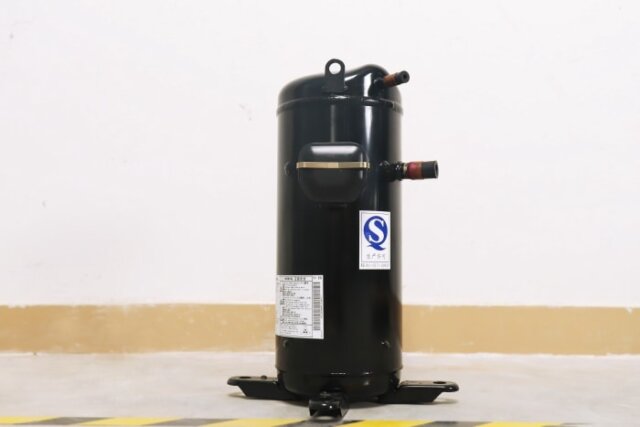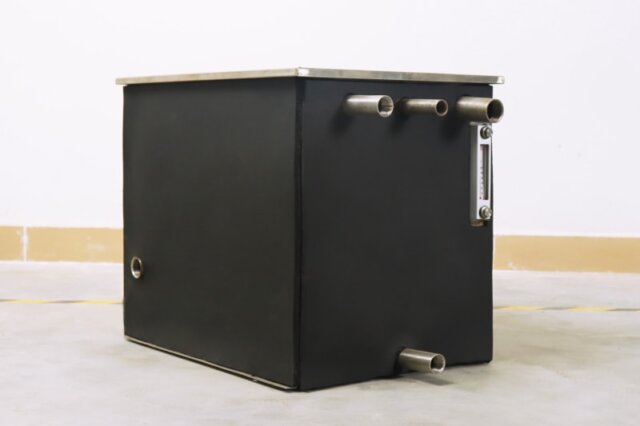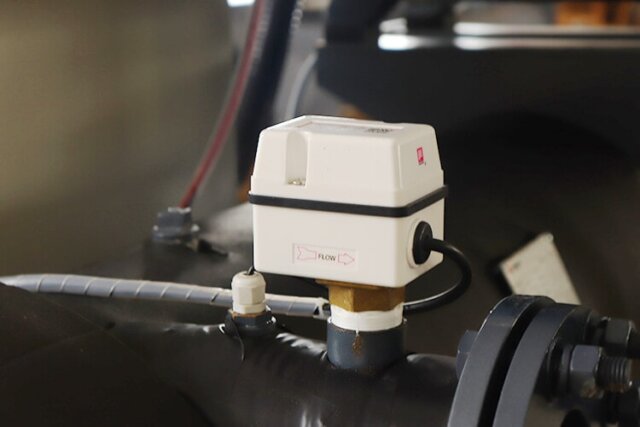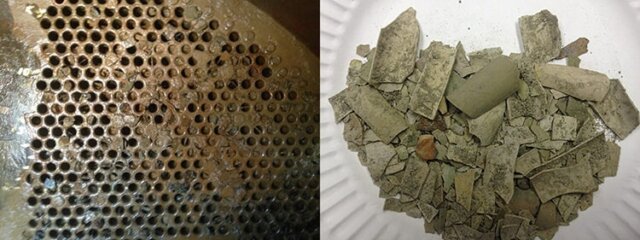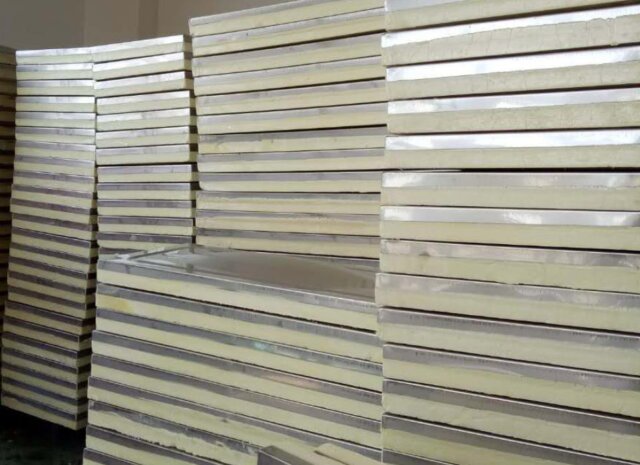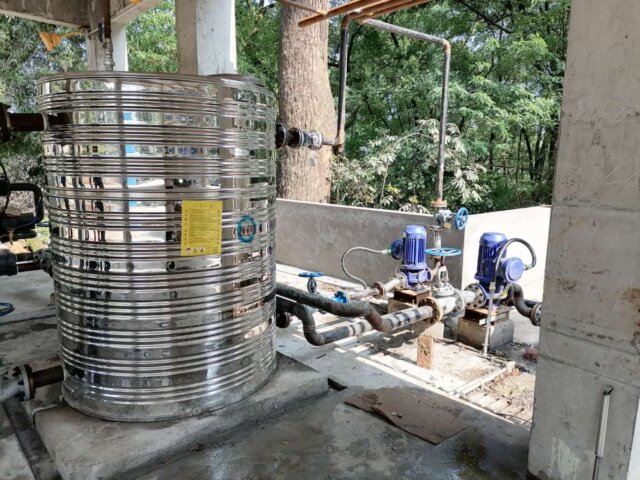Die Rolle des Puffertanks
1. Wenn der Puffertank nicht verwendet wird, startet der Kompressor häufig und stoppt häufig.
Aufgrund der begrenzten Wassermenge im Zirkulationsschaltkreis erreicht die Wassertemperatur die Zieltemperatur, die wir in sehr kurzer Zeit eingestellt haben. Zu diesem Zeitpunkt wird der Kompressor nicht mehr funktionieren. In sehr kurzer Zeit steigt die Wassertemperatur wieder auf die Temperatur, die den Kompressor zum Starten auslöst. Dieser häufige Start und Anhalten verringert die Lebensdauer des Kompressors erheblich und verschwendet viel Strom. Wir brauchen also nicht nur einen Puffertank, sondern auch die Kapazität des Wassertanks ist besser, um größer zu sein.
2. Es kann sicherstellen, dass der reibungslose Wasserstrom im System den automatischen Abgass abschließt, um zu vermeiden, dass das Gerät eine Fehlfunktion meldet.
Wenn der Tank im Zirkulationssystem installiert ist, tritt das zirkulierende Wasser aus dem oberen Teil des Tanks und entlädt sich aus dem unteren Teil, so dass sich das Gas im Wasser im Innenraum ansammelt und der Druck im System das Gas automatisch aus dem oberen Auspuffventil des Tanks entlastet. Auf diese Weise kann das System nicht nur Gasfreiheit sein, sondern auch den Laufrad der Pumpe vor Luftblasen schützen und den normalen Betrieb des Kompressors sicherstellen. Wenn es keinen Puffertank gibt, besteht möglicherweise das Risiko einer Fehlfunktion im Durchflussschalter.
3.. Es kann die Entwässerung des Systems gründlicher gestalten und das System nicht verstopfen.
Die im Kühler verwendete Wasserquelle kann eine große Anzahl von Verunreinigungen haben, die sich durch den Kreislauf langsam am Boden des Puffertanks ansammeln. Dies verhindert, dass eine große Anzahl von Verunreinigungen an der inneren Rohrleitungen des Kaltes haften und Abnormalitäten bei der Kühlung verursachen.
Puffertankauswahl
1. Der gute oder schlechte Isolierungseffekt des Wassertanks wird durch die Dicke und Abdeckung der Isolationsschicht beeinflusst.
Je dicker die Isolationsschicht, desto breiter die Abdeckung, desto besser der Isolierungseffekt. In den wärmeren Winterplätzen, die empfohlene Tankisolationsschichtdicke 40 ~ 50 mm beträgt, beträgt die empfohlene Tankisolierungsschichtdicke 80 ~ 100 mm. Darüber hinaus hat der Isolierungseffekt der Isolationsschicht zusätzlich zur Dicke, aber auch mit der Dichte des Polyesterschaums eine Beziehung, je mehr feste Dichte, desto besser der Isolierungseffekt und umgekehrt, wenn der Schaum nicht gleichmäßig den Isolierungseffekt beeinflusst.
2. Die Lage der Öffnung des Wassertanks sollte ebenfalls beachtet werden.
Der Auslass liegt etwa 30 cm von unten entfernt. Das System läuft am Boden der Tankkorrosion, der Verunreinigungen und des Skalierungsniederschlags auf den Boden, wenn die Öffnungsposition beim Pumpen-Wasser-Sediment zu einem zu niedrigen Pumpenfilter gesaugt wird. Darüber hinaus ist der Druck am Boden des Tanks größer, wodurch die Last der Pumpe erhöht wird. Der Rückfluganschluss ist 20 cm von oben entfernt. Manchmal ist der Rückfluss relativ groß, was verhindern kann, dass das Wasser überflutet oder herausspritzt. Natürlich bezieht sich hier auf den nicht ausgedruckten Tank. Es spielt keine Rolle, ob wir einen Drucktank auswählen, aber es muss ein Abgasventil geben.
3. Der Boden des Wassertanks muss fest sein.
Der Boden des Tanks sollte eine Isolationsschicht haben, und es sollte auf beiden Seiten Stahlstützen haben, um zu verhindern, dass die Grundisolationsschicht aufgrund der Gewicht des Wassers beim voll geladenen Tank mit Wasser verformt.


